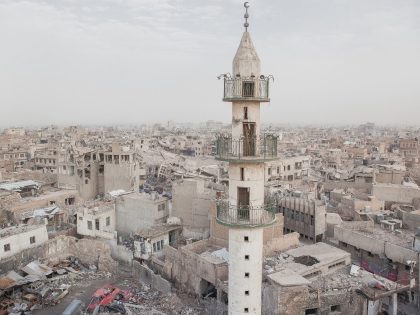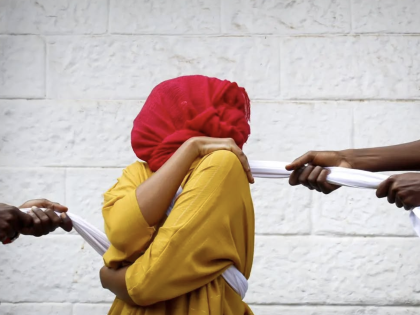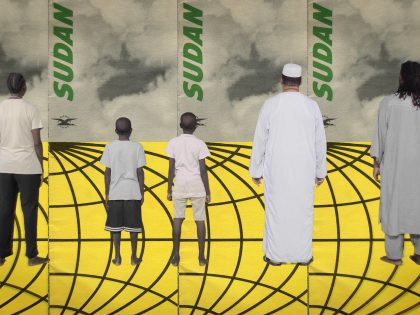Jonathan Jansen’s Lopsided View of Fees Must Fall
South African students have confronted us with a range of political, economic and intellectual questions to be answered – not merely posed a problem that needs to be managed.

Students at UWC during #FeesMustFall protests. Image Credit Barry Christianson.
Jonathan Jansen, the former vice-chancellor of the University of the Free State in South Africa likes to project himself as someone who does not like beating about the bush. He often uses his prominent media profile to make strong statements about the state of education in the country. The decisions he made during his tenure as vice-chancellor were controversial at times. His withdrawal of charges against the “Reitz Four” – racist students who humiliated five black workers – shortly after Jansen’s appointment there in 2009 in particular received a great deal of criticism.
During his inaugural speech, Jansen argued that punishing individual racists would not solve systematic racism, and he even went as far as apologizing on behalf of the University for the students’ horrific actions. This argument resonated with the one put forward at more length in an earlier book, Knowledge in the Blood: namely that accountability for racism or the humiliating initiation rituals at historically Afrikaans universities should not be shifted onto individual students, but that instead its historical and structural roots should be examined.
Surprisingly, Jansen was much less forgiving of students of the #FeesMustFall movement during the 2015 and 2016 protests. Jansen was quite outspoken in his condemnation of the movement on social media platforms. In this new book, Jansen elaborates on his criticism of #FeesMustFall, and in line with his previous work, he doesn’t see the protests as originating from individuals or individual groups (although he does map the fragmentation of the movement as an overarching national protest in 2015, to a more campus-bound one in 2016). Instead, he sees the uprising as stemming from greater societal issues: an unwelcoming institutional culture; structural inequality; a lack of preparation for tertiary education in primary and secondary education systems; disillusionment with government’s moral bankruptcy; corruption; and declining support to universities.
As indicated by the book’s subtitle, however, Jansen does not view the student protests as a positive response to these varied and immense challenges; he believes the movement has sparked a cycle of disruption and destruction that could mean the end of public universities.
Jansen’s framing of the student protests as violent conflicts (instead, perhaps, as a difficult but important contestation about fundamental constitutional rights), is clearly illustrated by the presentation of the book: a type of war report, dispatches from the trenches, from the viewpoint of the generals of one side of the battle – the vice-chancellors affected by the protests. Jansen interviewed the university leaders to get an insider’s view of how their distinct institutions were affected by the protests, but also – and this is the most intimate part of the book – how the vice-chancellors personally reacted to the stresses and danger of the protest actions, how their lives and the lives of their families were affected and how they managed that impact. These interviews are revealing, and highlight the effects of the tension around the fragile situation and personal attacks on vice-chancellors, often in a touching way.
Jansen is also critical of the rhetoric around “decolonization” of the curriculum that often lacks intellectual depth and precise definition. He also has it in for the media, both mainstream and social, that often sat in wait for conflicts to erupt on campuses rather than conduct in-depth analyses of the problem.
Another issue Jansen tackles is the “welfarisation” of the South African university: the increasing role that universities play in providing socio-economic backing to students – from psychological support to accommodation or meals – and the expectations this creates among students. Add these expenses to a balance sheet that is increasingly skewed due to declining support from government, pressure on students from rural and poor areas to succeed to embark on a career that could help them support family members, and demands on institutions to decolonize in ways that often amount to racial essentialism, and you have a recipe for a nearly impossible task for universities to remain sustainable and internationally competitive.
The picture Jansen paints is indeed a worrying one – not only because of the tactics the protesters started resorting to, but also precisely because of the depressing underlying range of economic, political and social factors that he outlines. Yet, one can’t help but wonder whether the tone of his criticism, which sometimes borders on contempt or Afro-pessimism, exposes something about his own exhaustion and frustration arising from the position he held.
Regardless of how informed Jansen might be, by only interviewing vice-chancellors and no student leaders or lecturers who are more sympathetic towards the student movement, the book provides a one-sided image of the events. Although Jansen refers anecdotally to his interactions with students, the book’s focus on the experiences of the vice-chancellors privileges the institutional perspective. The principle of audi alteram partem falls by the wayside, and one can but wonder what the book would have offered had a more representative range of interviewees been sought.
What motivates a student to face teargas and armored police to march to Parliament and the Union Buildings? Is it really simply disillusionment and anger that maintained the movement, or is there a hopeful message to find here as well, namely that this generation of young people considers their education important enough, and corrupt governance contemptible enough, for them to put their bodies on the line for those beliefs?
These are the questions which Jansen’s dystopian book unfortunately does not provide the answers to. Although the reader of this book will be provided with an insider’s insight to the institutional side of the conflict, the questions asked by the protesting students require a multi-leveled answer, one that will have to draw on all the knowledge and experiences that scholars and students can provide.
The students have confronted us with a range of political, economic and intellectual questions to be answered – not merely posed a problem that needs to be managed.
- This review first appeared in Afrikaans in Rapport, a publication of Media24.



















